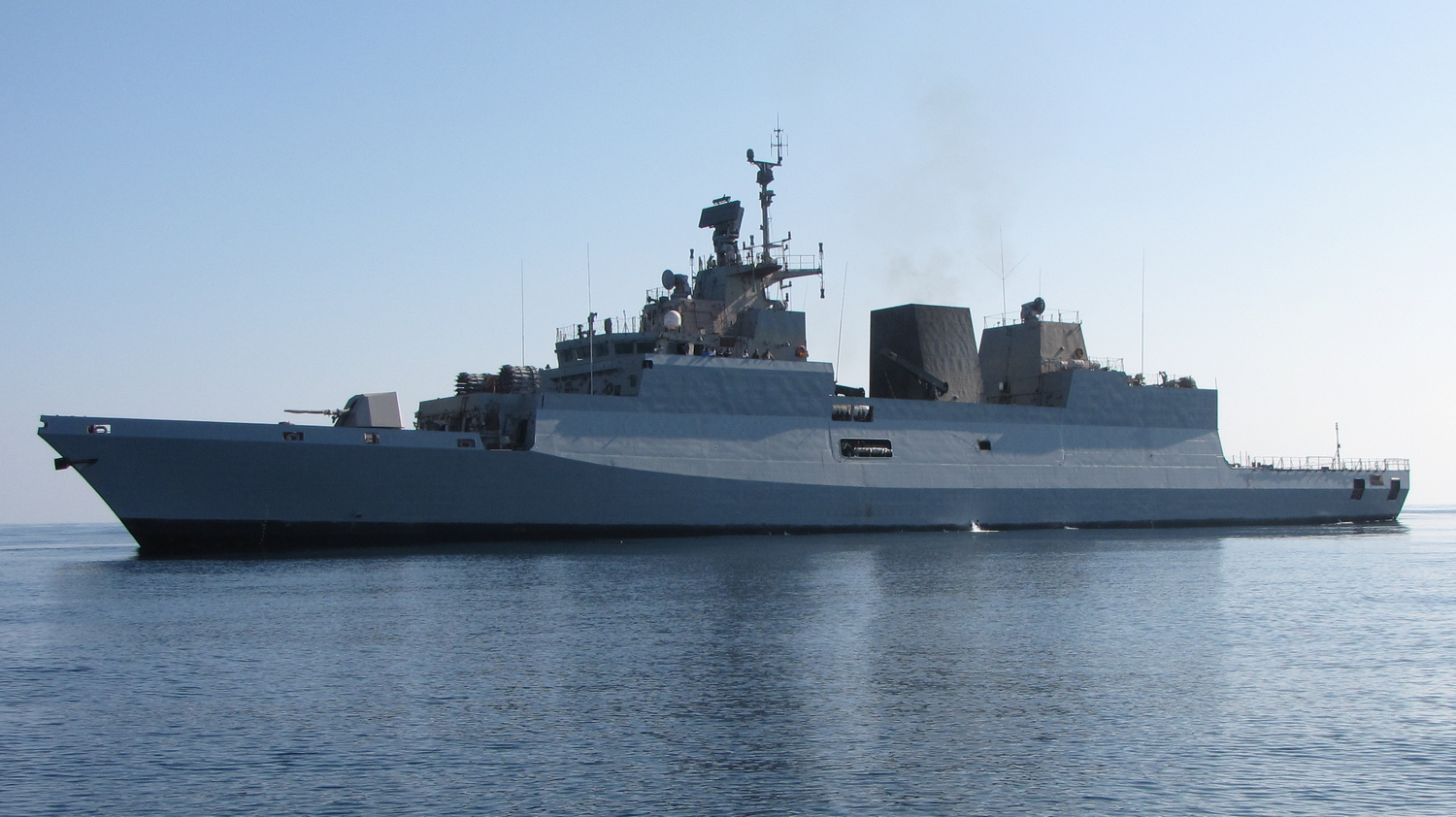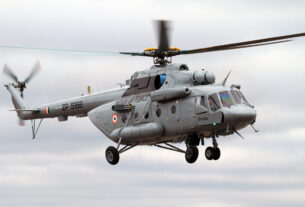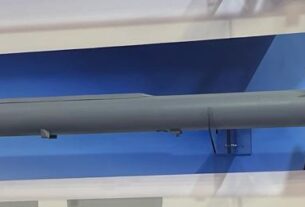Role of OPVs and tankers
Given the huge seascape that surrounds peninsular India’s 7500 km coastline, the combined maritime assets of the Indian Navy, the Indian Coastguard, the Sagar Prahari Bal and inshore patrol boats with the State governments are woefully inadequate as is evident from the almost daily seizure of Indian fishing boats and fishermen by Pakistan, Sri Lanka and Bangladesh.
The Mumbai attack on 26/11/2008 for which the Pakistani terrorists used the sea route to infiltrate into the city exposed a huge security gap in India’s defences. In spite of all the changes that have been introduced after that attack the danger to Mumbai is still palpable as can be gauged from the episode of a merchant ship that had been abandoned as far across the Arabian Sea as Oman. It drifted across the north Arabian Sea and landed up, undetected, on the Mumbai beach. The very same phenomenon that helped the ghost ship reach Mumbai – the ocean currents – can be used by Pakistan to float mines into Indian territorial waters. With a paucity of mine counter-measure vessels India will find its main economic hub shut down by this threat.
For a nation that aspires to be the sole security provider in the Indian Ocean littoral, India will have to first secure its own front yard before it can credibly enforce security across the littoral.
It is strange indeed that even when India has the expertise to manufacture fast offshore patrol vessels (OPVs) and fast shallow-draught interceptor vessels not enough are being manufactured to, at the very minimum, protect the Indian fishing community from foreign depredations. Recently a Tamil fisherman was shot dead by Sri Lankan elements and there are reports that many Sri Lankan boats have Chinese crew.
Patrol pattern
To end the charade of arrest and release of fishermen from each other’s countries, the Indian Coast Guard the mandate of which is “To Protect”, must redesign its deployment and patrol pattern vis-à-vis Pakistan, Sri Lanka and Bangladesh to be able to shepherd the fleet of Indian fishing boats that swarm into neighbouring waters to harvest fish and prevent them from straying into territorial waters. This would be both humanitarian and help protect national self-respect. Conversely, the Indian Coast Guard patrols would act as a deterrent against any attempt by foreign vessels to harass, arrest and seize Indian boats. In conjunction with the relevant fishery-related institutions the government of India and the nine maritime State governments must initiate fish culture to improve the dwindling shoals of fish so that over years Indian fisherfolk will not need to cross territorial waters to ensure some catch.
Within a range of about 1000 km India has been indigenously constructing vessel that are both fast and have the stamina to stay on station for up to 72 hours. This implies a combination of fast OPVs/patrol vessels and a mothership to provide fuel and the essential commodities for life at sea. The Larsen and Toubro product can attain a short-dash speed of more than 80 kmph and has a range (just under 1000 km) to effectively patrol the maritime expanses vis-à-vis Pakistan, Sri Lanka and Bangladesh. The Indian Coast Guard which operates these vessels has the responsibility of patrolling an Exclusive Economic Zone of about 2.2 million square km extending 370km (200 nautical miles from the shoreline). The Indian Coast Guard which has responsibility to protect Indian fisherfolk has 16 offshore patrol vessels with a range of about 11,000 km and 43 patrol vessels with a range of 500 nautical miles (925 km). The latter brings the fishing grounds adjacent to Pakistan, Sri Lanka and Bangladesh within easy reach.
To be able to make optimum use of the existing fleet the Indian Navy which has the overall responsibility of protecting the ocean space and the Indian Coast Guard need the backup of several replenishment ships that will resupply fuel/water (an integral onboard desalination plant could provide fresh water on tap) and other essential commodities and execute medical evacuation from the patrol vessels to ensure that they can stay longer on station per trip. The endurance can be enhanced from 24 hours before the vessel has to return to harbor up to as much as 72 hours depending on the rostering of the one officer/11 other rank crew. Four-hour shifts will make it possible to keep a watchout for any Indian boat straying into foreign territorial waters and at the same time prevent any foreign vessel from attacking and taking Indian prisoners.
Given the depth of the territorial waters (12 nautical miles-22.2 km) and the Exclusive Economic Zone (370 km) one or two offshore patrol vessels will not ensure inviolability of sovereignty or protection of fisherfolk. They will have to be in sufficiently high numbers to be able to effectively shepherd the hundreds of Indian fishing boats that operate in areas close to the disputed Sir Creek and areas close to Pakistan. A minimum fleet of six patrol vessels with replenishment support of one resupply vessel will make sure that Indian deterrent presence is available 24X7 and no Indian fisherman is taken captive by Pakistan. It needs to be understood that allowing Indian citizens to be subjected to the viles of the Pakistan Army Inter-Services Intelligence is not conducive to peace and amity.
The manner in which the fate of the fishermen is being dealt with (especially the shooting in the Palk Strait) indicates a lack of political will. A larger presence of Indian patrol vessels (which are larger than patrol boats and smaller than offshore patrol vessels) in the immediate context of Pakistan, Sri Lanka and Bangladesh could remove a festering sore if handled diplomatically and with sagacity.
Replenishment vessels
No matter how many more OPVs are built and deployed the very size of the Indian Ocean littoral demands that replenishment ships to cater to the needs of every type of military vessel that the Indian Navy, the Indian Coast Guard and the Sagar Prahari Bal deploy in their respective jurisdictions must be in adequate number of “naval tankers” in which the modern version includes repair and maintenance and hospital facilities.
Currently, the Indian Navy (which has the overall charge of all maritime issues) has only four replenishment vessels in its fleet. The vintage Deepak and Shakti bought from Italy carry 27,500 tonnes. The larger (35,900 tonnes) Jyoti was acquired from the former Soviet Union (now the Russian Federation). But the most interesting acquisition in this class of vessels is the INS Aditya which was built by the Garden Reach Shipbuilders and Engineers of Kolkata. It has a 24,614 tonne draught and it is designated as oiler, replenishment and repair ship. The repair aspect ensures that there is a chance of dealing with repairs, maintenance without having to bring the vessel to harbor. The equally important characteristic of this ship is that it is replete with self-defence weaponry like surface to air missiles and India-made machine guns (Medak). India needs more of these, at least six for the Arabian Sea, two for the Bay of Bengal and four for forays into the South China Sea where India’s “look East, act East” policy is gaining momentum.
Mid-ocean deployment of such replenishment vessels is necessary because many a time it is seen that when intelligence indicates the presence of hostile ship/boats in a specific portion of the ocean by the time the interceptors arrive at site the target has moved on and is untraceable. The pre-positioning of larger number of smaller, faster OPVs straddling the Lines of Communications between Aden and Colombo and the pirate infested areas of the southeast Asia will help faster and surer interceptions.




